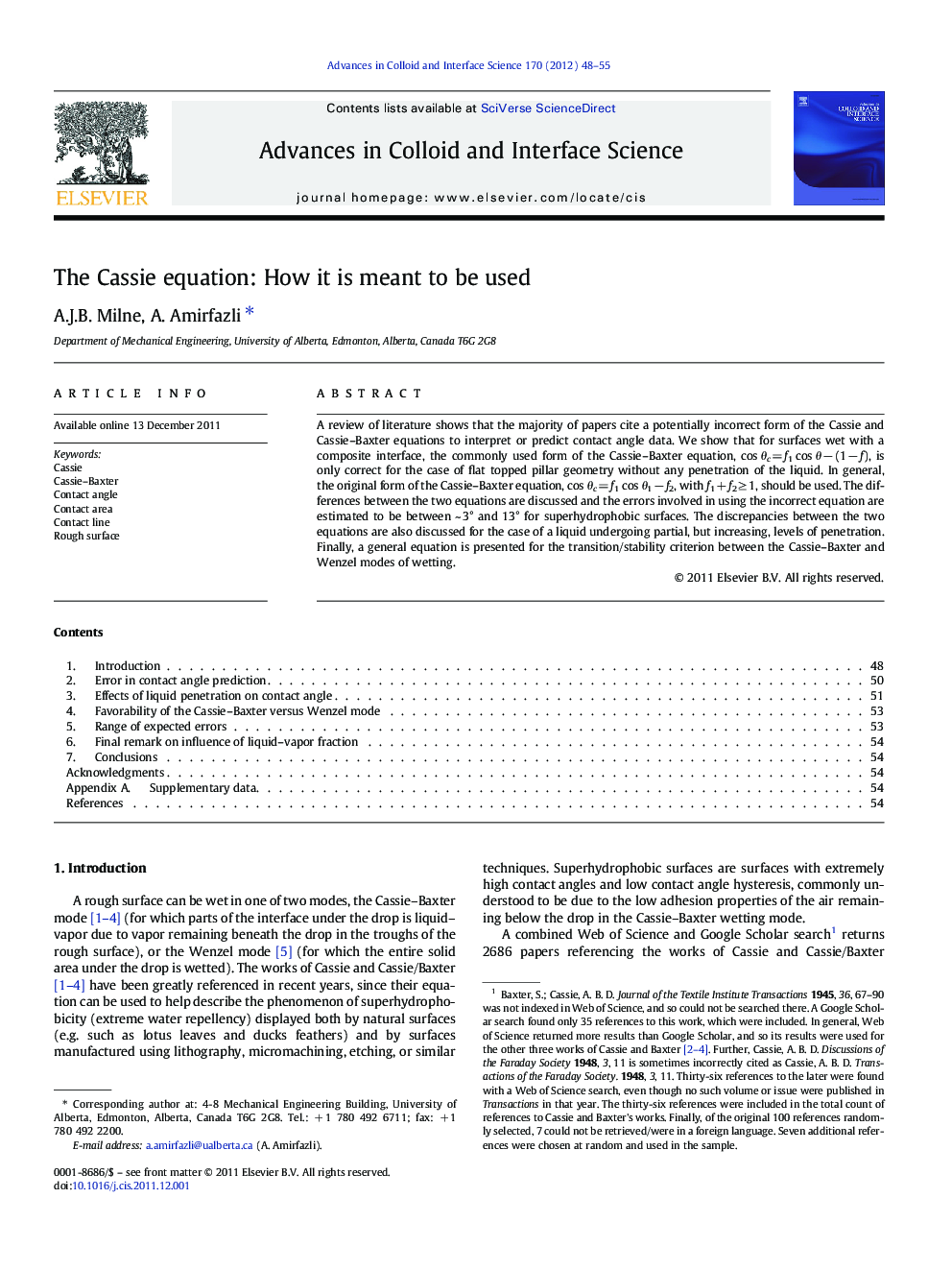| کد مقاله | کد نشریه | سال انتشار | مقاله انگلیسی | نسخه تمام متن |
|---|---|---|---|---|
| 590874 | 1453578 | 2012 | 8 صفحه PDF | دانلود رایگان |

A review of literature shows that the majority of papers cite a potentially incorrect form of the Cassie and Cassie–Baxter equations to interpret or predict contact angle data. We show that for surfaces wet with a composite interface, the commonly used form of the Cassie–Baxter equation, cos θc = f1 cos θ − (1 − f), is only correct for the case of flat topped pillar geometry without any penetration of the liquid. In general, the original form of the Cassie–Baxter equation, cos θc = f1 cos θ1 − f2, with f1 + f2 ≥ 1, should be used. The differences between the two equations are discussed and the errors involved in using the incorrect equation are estimated to be between ~ 3° and 13° for superhydrophobic surfaces. The discrepancies between the two equations are also discussed for the case of a liquid undergoing partial, but increasing, levels of penetration. Finally, a general equation is presented for the transition/stability criterion between the Cassie–Baxter and Wenzel modes of wetting.
Figure optionsDownload as PowerPoint slideHighlights
► cos θc = f cos θ − (1 − f) is a simplified form of the Cassie–Baxter equation.
► cos θc = f1 cos θ1 − f2 (with f1 + f2 ≥ 1) is the correct, full, Cassie–Baxter equation.
► A majority of papers incorrectly cite the simplified Cassie–Baxter equation.
► Neglecting solid–liquid and liquid–vapor roughness under-predicts contact angle by 3–13°.
► New and universal formulation to predict Cassie mode stability is provided.
Journal: Advances in Colloid and Interface Science - Volume 170, Issues 1–2, 15 January 2012, Pages 48–55